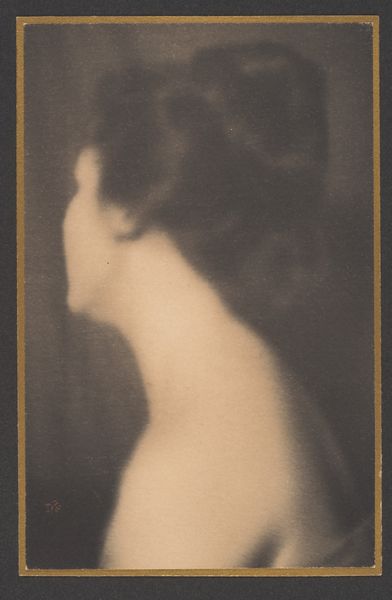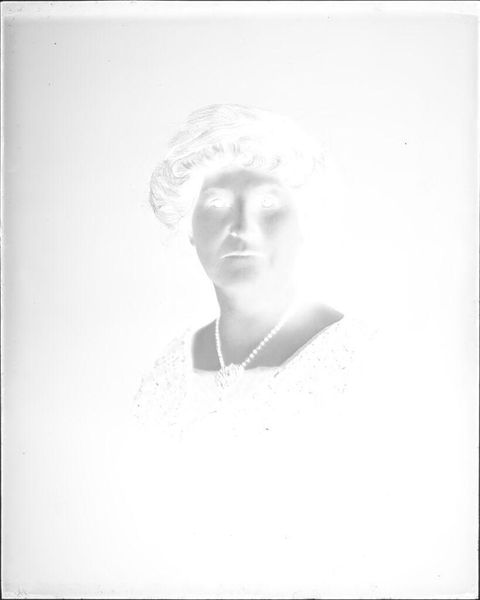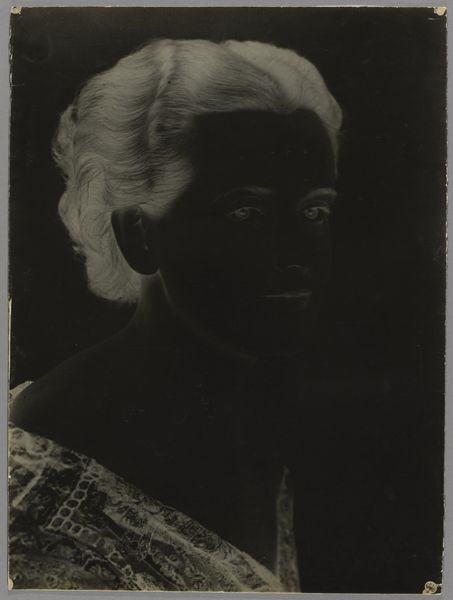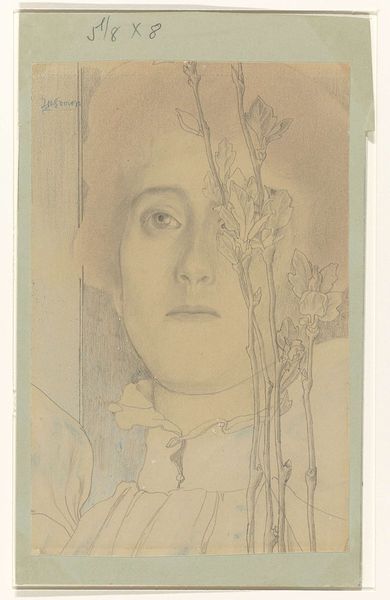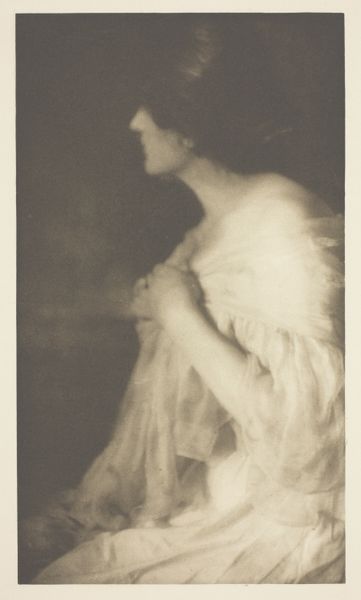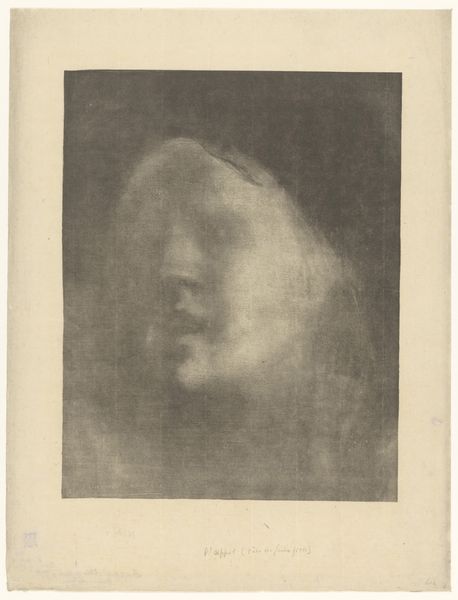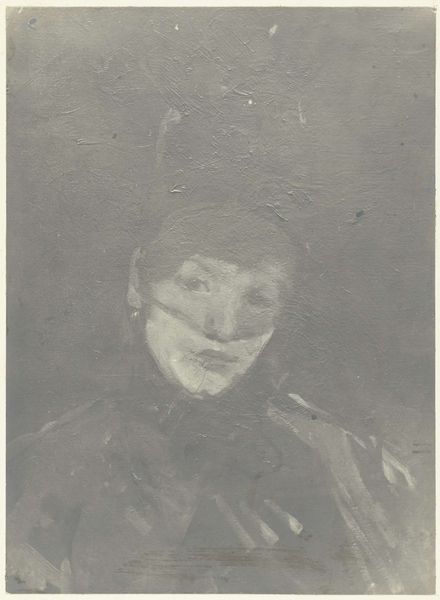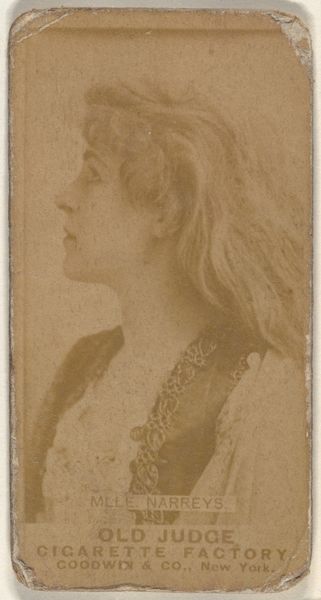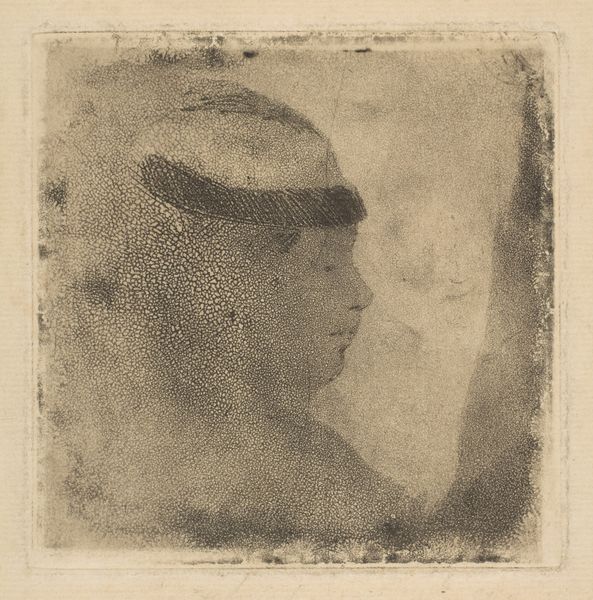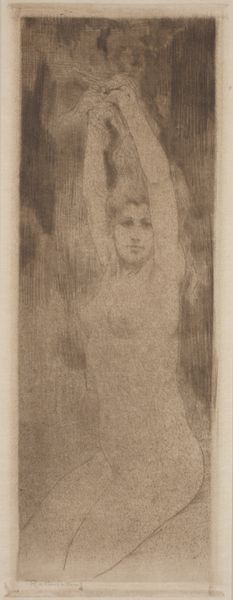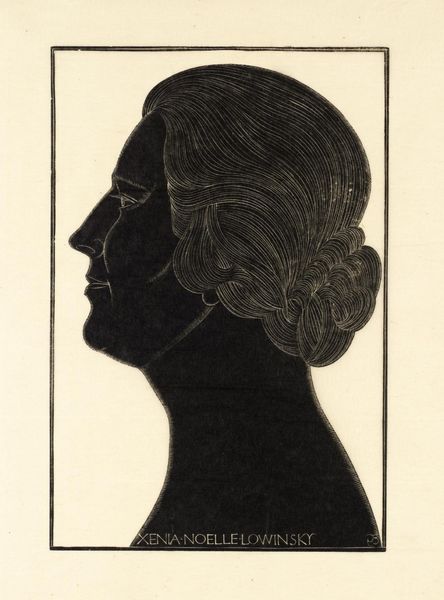![[Egeria] by Julia Margaret Cameron](/_next/image?url=https%3A%2F%2Fd2w8kbdekdi1gv.cloudfront.net%2FeyJidWNrZXQiOiAiYXJ0ZXJhLWltYWdlcy1idWNrZXQiLCAia2V5IjogImFydHdvcmtzLzJhMjg3ODAyLTRmMDItNDYzYy05MTJmLWJkODc0NGM3MTg3YS8yYTI4NzgwMi00ZjAyLTQ2M2MtOTEyZi1iZDg3NDRjNzE4N2FfZnVsbC5qcGciLCAiZWRpdHMiOiB7InJlc2l6ZSI6IHsid2lkdGgiOiAxOTIwLCAiaGVpZ2h0IjogMTkyMCwgImZpdCI6ICJpbnNpZGUifX19&w=3840&q=75)
Dimensions: 36.2 x 27.6 cm. (14 1/4 x 10 7/8 in.)
Copyright: Public Domain
Editor: So, this is Julia Margaret Cameron's photograph, *Egeria*, created in 1874. The print just radiates a dreamy, soft quality. What strikes you about it? Curator: The image intrigues me through its construction. Consider the albumen print itself – the paper, the chemicals, the darkroom labor. Cameron wasn't just snapping a photo; she was engaging in a deliberate, hands-on process. How do you think the choice of this specific process and material impacted the reception of her work during the time, in contrast to today’s quick image culture? Editor: That’s a great point, the physical process really adds a tangible quality... So it challenges, then, the more standard idea of art needing to be painting or sculpture to really be something crafted? Curator: Precisely. By elevating photography – a medium often deemed mechanical or simply documentary – through her artistic labor, Cameron challenges that very hierarchy. And think about the model. The subject isn't just passively sitting; her expression, pose, and even the dress were carefully chosen. There's labor on both sides of the camera. Does this impact your appreciation of Cameron’s photograph? Editor: It completely does! Understanding the physical effort makes it feel more precious, more valuable as a made thing. Also, understanding the historical context behind image making gives so much more weight to the artist's choices. Curator: Exactly. We've moved beyond just seeing an image to acknowledging the intricate layers of production and intention embedded within. Hopefully that deepens our understanding. Editor: I completely agree. Seeing it as a confluence of material, labor, and intent transforms my understanding. Thanks!
Comments
No comments
Be the first to comment and join the conversation on the ultimate creative platform.
